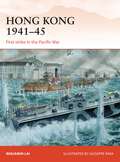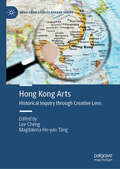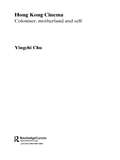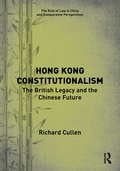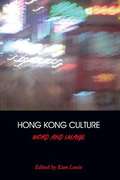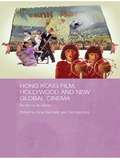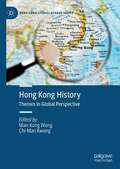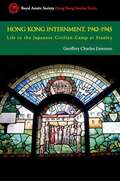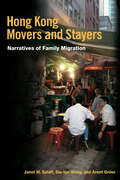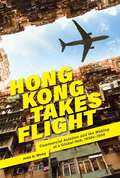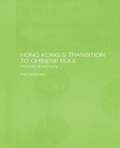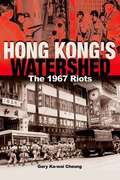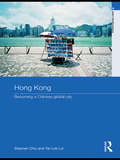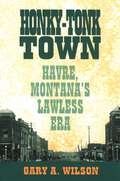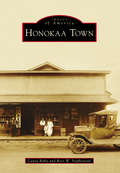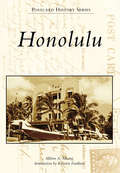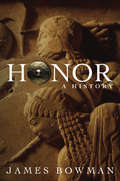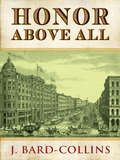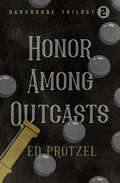- Table View
- List View
Hong Kong 1941-45
by Giuseppe Rava Benjamin LaiOn 8th December 1941, as part of the simultaneous combine attack against Pearl Harbor, the Imperial Japanese Army (IJA) invaded the Philippines, Thailand and Malaysia and the British colony of Hong Kong. After only 18 days of battle the defenders, a weak, undermanned brigade was overwhelmed by a superior force of two battle-harden IJA divisions. What makes the battle of Hong Kong was not the scale - just 14,000 defended the colony - but the intensity of this battle fought not only by the British Army, Navy and Air Force but also Canadians, Hong Kong's own defence force, the Indian Army as well as many civilians. The campaign itself is characterized by a fierce land battle, with long artillery duals and as well as fast naval actions with intense actions at the Gin Drinkers Line as well as the battle of Wong Nai Chung Gap where a handful of defenders took on an entire Japanese regiment. Less known but equally important are individual valour such as CSM John Robert Osborne winning a posthumous VC, throwing himself over a Japanese grenade to save fellow combatants. Capitulation by the defenders on 25 December 1941 marks the end of one battle and the beginning of another. A subject not significantly covered by Western historian is local resistance to Japanese occupation. Lead by the communist Chinese, many continued to fight the Japanese forming the Guangdong people's Anti-Japanese East River Guerrilla Detachment that by 1945 grew from 200 to a 6,000-strong force. The guerrillas rescued downed allied pilots, harassed the Japanese with bombing and assassinated traitors and collaborators. Those Allies POW that managed to escape to China continued the fight in a secretive new organization - the British Army Aid Group (BAAG).As the war draw to a close, the question of reestablishing British control became a highly contentious diplomatic dual between China, USA and Britain, but with the death President of Roosevelt in 1945, decolonization lost its main champion and Britain was able to outmaneuver Chiang Kai Shek, the Chinese Generalissimo, and recover Hong Kong as a British Colony. After three years and eight months of Japanese occupation, Rear Admiral Sir Harcourt sailed into Hong Kong on board the cruiser HMS Swiftsure to reestablish control over the colony and accepted the formal surrender of Japan on 16 September 1945.
Hong Kong After 1997: The First 1000 Days
by Kwok Nai-WangThe 1000 days of Hong Kong under Chinese rule witnessed a widening gap between the rich and poor, and an erosion of independence of the judiciary in the political sphere.
Hong Kong Arts: Historical Inquiry through Creative Lens (Hong Kong Studies Reader Series)
by Lee Cheng Magdalena Ho-yan TangThis book overviews the depictions of Hong Kong through the creative lens of arts. Instead of examining how Hong Kong people make arts, it looks into how Hong Kong has been depicted through practice and/or set as the scene in various art forms including videogames, theatre, music, comics, Cantonese opera, and architecture. The colonial legacy and geographical identity of Hong Kong as a port city inspire decades of global creative community to comprehend sonic and visual elements related to its cultures. It has frequently been set as the stage or backdrop of many artworks and cultural artefacts. The different depictions as in various art forms and by different artists offer multifaceted perspectives on the city's complex identity, inviting a full account of how Hong Kong is perceived, transformed, and created in the process of artmaking. Such account will preserve the history of artmaking in Hong Kong and offer insight on its roles in the global creative community. This book is of key interest to scholars and students of Hong Kong Studies and Asian Studies, as well as practitioners in various art forms who are interested in the history and culture of Hong Kong.
Hong Kong Cinema: Coloniser, Motherland and Self
by Yingchi ChuExamining Hong Kong cinema from its inception in 1913 to the end of the colonial era, this work explains the key areas of production, market, film products and critical traditions. Hong Kong Cinema considers the different political formations of Hong Kong's culture as seen through the cinema, and deals with the historical, political, economic and cultural relations between Hong Kong cinema and other Chinese film industries on the mainland, as well as in Taiwan and South-East Asia. Discussion covers the concept of 'national cinema' in the context of Hong Kong's status as a quasi-nation with strong links to both the 'motherland' (China) and the 'coloniser' (Britain), and also argues that Hong Kong cinema is a national cinema only in an incomplete and ambiguous sense.
Hong Kong Constitutionalism: The British Legacy and the Chinese Future (The Rule of Law in China and Comparative Perspectives)
by Richard CullenHong Kong is widely regarded as an exemplar of authoritarian jurisdictions with a positive history of adhering to Rule of Law–shaped governance systems. British Hong Kong provides a remarkable story of the effective development and consolidation of such a system, which has continued to apply since 1997, when it became the Hong Kong Special Administrative Region (HKSAR) within the People’s Republic of China (PRC). This book adopts a fresh approach in examining the evolution of Hong Kong’s political-legal experience. It establishes that these prominent governance achievements were built on particular British constitutional foundations forged over many centuries. The work shows how the analysis of the British theorist Albert Dicey and, in particular, “Diceyan Constitutionalism” was fundamental, within the pivotal context of “Chinese Familism”, in shaping the development of governance institutions and operational procedures within the new British Colony. It discusses how Hong Kong’s system of Authoritarian Legality has come to pass. Exploring the essence of that system, the study probes how thoroughly it has been stress-tested, not least in 2019, and how well it may be placed to cope with tests yet to come. It also analyzes Hong Kong–Beijing relations and the long-term prospects for the HKSAR within the PRC based on a balanced contemporary assessment of China’s exceptional One Party State.
Hong Kong Culture
by Kam LouieHong Kong as a world city draws on a rich variety of foundational "texts" in film, fiction, architecture and other forms of visual culture. The city has been a cultural fault-line for centuries - a translation space where Chinese-ness is interpreted for "Westerners" and Western-ness is translated for Chinese. Though constantly refreshed by its Chinese roots and global influences, this hub of Cantonese culture has flourished along cosmopolitan lines to build a modern, outward-looking character. Successfully managing this perpetual instability helps make Hong Kong a postmodern stepping-stone city, and helps make its citizens such prosperous and durable survivors in the modern world. This volume of essays engages many fields of cultural achievement. Several pieces discuss the tensions of English, closely associated with a colonial past, yet undeniably the key to Hong Kong's future. Hong Kong provides a vital point of contact, where cultures truly meet and a cosmopolitan traveller can feel at home and leave a sturdy mark. Contributors include John Carroll, Carolyn Cartier, David Clarke, Elaine Ho, Douglas Kerr, Michael Ingham, C. J. W.-L. Wee, Chu Yiu-Wai, Gina Marchetti, Esther M.K. Cheung, Pheng Cheah, Chris Berry, and Giorgio Biancorosso.
Hong Kong Film, Hollywood and New Global Cinema: No Film is An Island (Media, Culture and Social Change in Asia)
by Gina Marchetti Tan See KamIn recent years, with the establishment of the Hong Kong Film Archive and growing scholarly interest in the history of Hong Kong cinema, previously neglected historical documents and difficult-to-access films have offered new research materials. As Hong Kong film history comes into sharper focus, its inextricable links across the decades to Southeast Asia, Korea, Japan, the United States, and to the far reaches of the Chinese diaspora have also become more evident. Hong Kong’s connection with Hollywood involves ties that bring together art cinema and popular genres as well as film festivals and the media marketplace with popular transnational genres. Giving fresh and facsinating insights into the vibrant area of Hong Kong, this exciting new book links Hong Kong with world film culture both within and beyond the commercial Hollywood paradigm. It emphasizes Hong Kong film in relation to other cinema industries, including Hollywood, and demonstrates that Hong Kong film, throughout its history, has challenged, redefined, expanded, and exceeded its borders.
Hong Kong History: Themes in Global Perspective (Hong Kong Studies Reader Series)
by Man-Kong Wong Chi-Man KwongThis book aims at providing an accessible introduction to and summary of the major themes of Hong Kong history that has been studied in the past decades. Each chapter also suggests a number of key historical figures and works that are essential for the understanding of a particular theme. However, the book is by no means merely a general survey of the recent studies of Hong Kong history; it tries to suggest that the best way to approach Hong Kong history is to put it firmly in its international context.
Hong Kong Holiday: China To Me, Hong Kong Holiday, And England To Me
by Emily HahnAuthor of such celebrated and acclaimed works as The Soong Sisters, China to Me, and Fractured Emerald: Ireland, Emily Hahn has been called by the New Yorker &“a forgotten American literary treasure.&” Now Hahn is reintroduced to a new generation of readers, bringing to light her richly textured voice and unique perspective on a world that continues to exist through both history and fiction. In a sense, Hong Kong Holiday is a supplement to Emily Hahn&’s China to Me, marked by the illustrative anecdote and incisive wit that spotlighted the most important incidents of her life during the long months from the Japanese capture of Hong Kong until she was finally returned home on the second voyage of the exchange ship, Gripsholm. Presented here is a crystal-clear picture of the oppressed city—its life in the bazaars, beauty shops, restaurants, and dens. Among the rich and among the poor, in hospitals and in internment camps, Hong Kong Holiday is exotic, intriguing, and all too real.
Hong Kong Internment, 1942-1945
by Geoffrey Charles Emerson'Hong Kong Internment, 1942-1945: Life in the Japanese Civilian Camp at Stanley' tells the story of the more than three thousand non-Chinese civilians: British, American, Dutch and others, who were trapped in the British colony and interned behind barbed wire in Stanley Internment Camp from 1942 to 1945. From 1970 to 1972, while researching for his MA thesis, the author interviewed twenty-three former Stanley internees. During these meetings, the internees talked about their lives in the Stanley Camp during the Japanese occupation. Long regarded as an invaluable reference and frequently consulted as a primary source on Stanley since its completion in 1973, the study is now republished with a new introduction and fresh discussions that recognize later work and information released since the original thesis was written. Additional illustrations, including a new map and photographs, as well as an up-to-date bibliography, have also been included in the book.
Hong Kong Movers and Stayers: Narratives of Family Migration (Studies of World Migrations)
by Siu-lun Wong Janet W. Salaff Arent GreveHalf a million Hong Kong residents fled their homeland during the thirteen years before Hong Kong's reversion to China in 1997. Nearly half of those returned within the next several years. Filled with detailed, first-hand stories of nine Hong Kong families over nearly two decades, Hong Kong Movers and Stayers is a multifaceted yet intimate look at the forces behind Hong Kong families' successful, and failed, efforts at migration and settlement. Defining migration as a process, not a single act of leaving, Hong Kong Movers and Stayers provides an antidote to ethnocentric and simplistic theories by uncovering migration stories as they relate to social structures and social capital. The authors meld survey analysis, personal biography, and sociology and compare multiple families in order to give voice to the interplay of gender, age, and diverse family roles as motivating factors in migration.
Hong Kong Public Housing: An Architectural and Policy History
by Miles GlendinningHong Kong Public Housing provides the first comprehensive history of one of the most dramatic episodes in the global history of the modern built environment: the vast public housing programme sponsored by successive Hong Kong governments from the 1950s, in a quest to build up the territory into a lasting ‘people’s home’. And unlike many of its counterparts elsewhere, this is a programme still ongoing today – a case of ‘history in progress’ – as Hong Kong now boasts one of the world’s longest-lasting public housing programmes. During that time, it has been not just a mirror of the cultural and economic values of Hong Kong society but also a reflection of more nebulous, fast-changing perceptions of identity – and a testament to the community-building achievements of Hongkongers over these years.This authoritative study combines architectural history with the broader social, political, and cultural aspects of housing production – particularly the geo-political issues of sovereignty and decolonisation that uniquely, and fundamentally, structured the trajectory of Hong Kong public housing and territory development. Exploring the relationship between built form, ideology, and administrative governance, it shows how massive state intervention interacted at times uneasily with Hong Kong’s dominant laissez-faire ethos, to help maintain the legitimacy of successive administrations during an era of ‘auto-decolonisation’, and support an interstitial society suspended between two sovereignties. Following more recent political changes, Hong Kong’s public housing heritage has also become a focus of nostalgic community pride – a monumental achievement of ‘home building’ which this book documents and celebrates for posterity.
Hong Kong Takes Flight: Commercial Aviation and the Making of a Global Hub, 1930s–1998 (Harvard East Asian Monographs #454)
by John D. WongCommercial aviation took shape in Hong Kong as the city developed into a powerful economy. Rather than accepting air travel as an inevitability in the era of global mobility, John Wong argues that Hong Kong’s development into a regional and global airline hub was not preordained. By underscoring the shifting process through which this hub emerged, Hong Kong Takes Flight aims to describe globalization and global networks in the making. Viewing the globalization of the city through the prism of its airline industry, Wong examines how policymakers and businesses asserted themselves against international partners and competitors in a bid to accrue socioeconomic benefits, negotiated their interests in Hong Kong’s economic success, and articulated their expressions of modernity.
Hong Kong's Second Return to China: A Critical Discourse Study of the National Security Law and its Aftermath
by Jennifer EagletonThis book is a cross-disciplinary study, incorporating political science, law, and sociolinguistics in its examination of Hong Kong&’s National Security Law which has impacted many aspects of life in the city. Through a critical discourse analysis lens, it details the lead-up to the Law&’s introduction in 2020, a textual analysis of the Law itself, the &“selling&” the Law to the public, the accompanying electoral changes, the effect on civil society, and the discourse of dissidents in exile. It ends with speculation on what the future will bring to the so-called &“One Country, Two Systems&” as it goes forward. The book caters for the general reader, the university student, and seasoned academic who want to be informed about the changes in Hong Kong as it transitions to be more &“fully China&”. The book ultimately argues that the &“One Country, Two Systems&” experimental framework had always been problematic from both a rhetorical and ideological perspective.
Hong Kong's Transition to Chinese Rule: The Limits of Autonomy
by Ralf HorlemannFollowing the return of Hong Kong to Chinese sovereignty, it appears that the 'high degree of autonomy' promised to Hong Kong is limited in many ways. China's reservations about the development of democracy in Hong Kong lies at the heart of the problem. The conceptual inadequacies set out in the Basic Law, Hong Kong's mini-constitution, show a correlation between a lack of democracy and a loss of autonomy. This book argues that genuine autonomy from the central government in Beijing is impossible without a democratic system in Hong Kong. Developments since the handover have, however, demonstrated that democratic trends have been halted and even reversed and that democracy is not likely to be established in Hong Kong in the near future.
Hong Kong's Watershed
by Gary Ka-wai CheungHong Kong's Watershed: The 1967 Riots is the first English book that provides an account and critical analysis of the disturbances based on declassified files from the British government and recollection by key players during the events. The interviews with the participants, including Jack Cater, Liang Shangyuan, George Walden, Tsang Tak-sing, Tsang Yok-sing, and Hong Kong government officials, left irreplaceable records of oral history on the political upheaval. The book analyses the causes and repercussions of the 1967 riots which are widely seen as a watershed of postwar history of Hong Kong. It depicts the prelude to the 1967 riots, including the Star Ferry riots in 1966, the leftist-instigated riots in Macau in 1966, and the major events leading to the disturbances, including the labour dispute at a plastic flower factory, the border conflict in Sha Tau Kok, bomb attacks and arson attacks on the office of British charge d'affaires in Beijing.
Hong Kong: Becoming a Chinese Global City (Asia's Transformations/Asia's Great Cities #10)
by Tai-Lok Lui Stephen ChiuHong Kong is a small city with a big reputation. As mainland China has become an 'economic powerhouse' Hong Kong has taken a route of development of its own, flourishing as an entrepot and a centre of commerce and finance for Chinese business, then as an industrial city and subsequently a regional and international financial centre. This volume examines the developmental history of Hong Kong, focusing on its rise to the status of a Chinese global city in the world economy. Chiu and Lui's analysis is distinct in its perspective of the development as an integrated process involving economic, political and social dimensions, and as such this insightful and original book will be a core text on Hong Kong society for students.
Honky
by Dalton ConleyThe author recalls how his childhood had all of the classic elements of growing up in America. His entertaining memoir as child, teenager and adult reveals how race and class impact all of us.
Honky-Tonk Town: Havre, Montana's Lawless Era
by Gary A. WilsonFrom its beginnings as a railroad siding in 1887, Havre, Montana was a tough, wide-open town with plenty of saloons, gambling halls, opium dens, brothels, and cheap cribs. With the passage of Prohibition, it was a natural hub for smuggling illegal alcohol across the nearby Canadian border. Honky-Tonk Town tells the story of this wild and woolly frontier town.
Honokaa Town
by Laura Ruby Ross W. StephensonWalk down Mamane Street, the heart of Honokaa Town, and step back into the late 19th and early 20th century. Honokaa's single-wall, wooden plantation-era buildings are as much a symbol of Hawaii to local people as Diamond Head is to tourists. The commercial buildings have their emblematic false fronts and totan (corrugated iron) cladding. They contained, and still contain, mom-and-pop businesses that were founded upon personal relationships, required the labor of whole families, and provided for the education of the next generation. The small size of the town encouraged cross-pollination of peoples. Sugar workers, paniolos (cowboys), coffee farmers, and homesteaders all came to Honokaa.
Honolulu (Postcard History Series)
by Milton A. MasingHonolulu's population grew in the first few decades of the 1800s from a few hundred people living in thatched huts to about 3,000 in 1823. Missionaries erected the city's earliest wooden buildings in the 1820s.Starting in the 1840s, stones were used in construction. With so many foreigners moving to Honolulu during the late 1800s, rapid growth occurred, and the remaining thatched huts and old paths were replaced with permanent structures and patterned streets. By the 1900s, control of the city was dominated by the ever-increasing tide of Caucasians. The early 1900s also marked the beginning of a time when millions of postcards were mailed daily throughout Honolulu and the world.
Honolulu: A Novel
by Alan BrennertFrom the bestselling author of the dazzling historical saga ("Washington Post") "Moloka'i" comes the irresistible story of a young immigrant bride in a ramshackle town that becomes a great modern city.
Honor
by James BowmanThe importance of honor is present in the earliest records of civilization. Today, while it may still be an essential concept in Islamic cultures, in the West, honor has been disparaged and dismissed as obsolete. In this lively and authoritative book, James Bowman traces the curious and fascinating history of this ideal, from the Middle Ages through the Enlightenment and to the killing fields of World War I and the despair of Vietnam. Bowman reminds us that the fate of honor and the fate of morality and even manners are deeply interrelated. His book is an indispensable document in a time of growing concern about the erosion of values.
Honor Above All
by J. Bard-CollinsPinkerton agent Garrett Lyons arrives in Chicago in 1882, close on the trail of the person who murdered his partner. He encounters a vibrant city that is striving ever upwards, full of plans to construct new buildings that will "scrape the sky." In his quest for the truth Garrett stumbles across a complex plot involving counterfeit government bonds, fierce architectural competition, and painful reminders of his military past. Along the way he seeks the support and companionship of his friends--elegant Charlotte, who runs an upscale poker game for the city's elite, and up-and-coming architect Louis Sullivan. Rich with historical details that bring early 1880s Chicago to life, this novel will appeal equally to mystery fans, history buffs, and architecture enthusiasts. Silver Award winner, IBPA Ben Franklin Award in the Mystery/Suspense category; finalist for the ForeWord Reviews IndieFab Awards in the Mystery category. "Bard-Collins' detailed knowledge of building, architecture and Chicago history forms a solid base for a debut showcasing a hero reminiscent of Sam Spade." -- Kirkus Reviews ; "An historical novel embedded throughout with meticulously accurate details that bring early 1880s Chicago to life as a backdrop to a fascinating and engaging mystery/suspense story. Exceptionally entertaining from beginning to end...very highly recommended for personal reading lists and community library collections. -- Midwest Book Review
Honor Among Outcasts (DarkHorse Trilogy)
by Ed ProtzelAs the Civil War rages, a man and his regiment of former slaves risk their lives for freedom in the second novel from the author of The Lies That Bind. 2017 Missouri Writers Guild Historical Fiction Award Winner After fleeing Mississippi and the destruction of DarkHorse plantation, Durksen Hurst, his fiancée, Antoinette, and a band of freed slaves have reached the north, where they are plunged into a gale-force storm of violence and retribution. On the Missouri-Kansas border, neighbor has turned against neighbor as bushwhackers wreak havoc across the land. Desperately wanting to fight to free their people, Durk&’s Black comrades urge him to try to form a cavalry regiment. Never one to back down from a challenge—and always one to skirt the law—Durk succeeds. Following their every move is Devereau French, thirsting for revenge after what happened in Mississippi. Meeting up with Confederate guerilla leader William Quantrill, French convinces him to raid Lawrence, Kansas, where Durk and his men are training. The plan works better than expected: After the bloody massacre, Durk and Antoinette are arrested as suspected spies. To save themselves from the hangman&’s noose, Durk must pull every trick he can think of—and some he could never have imagined . . . &“A pulse-pounding journey of desperate men and women caught up in the merciless forces of hatred and fear that tear worlds apart, and the healing power of friendship to bring them together.&” —St. Louis Post-Dispatch &“A simply riveting read . . . will leave enthralled readers looking eagerly toward the concluding volume Something in Madness.&” —Midwest Book Review
